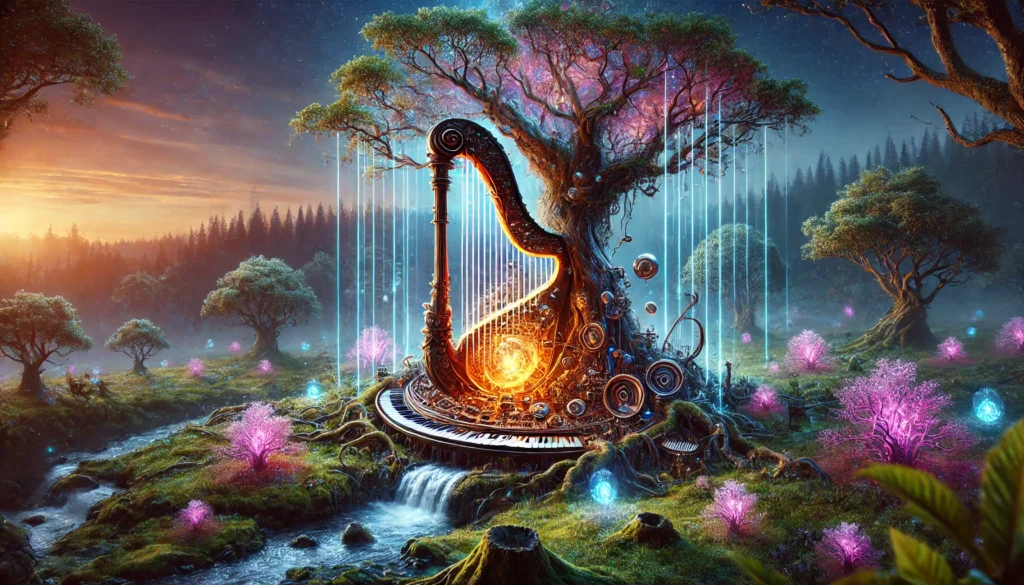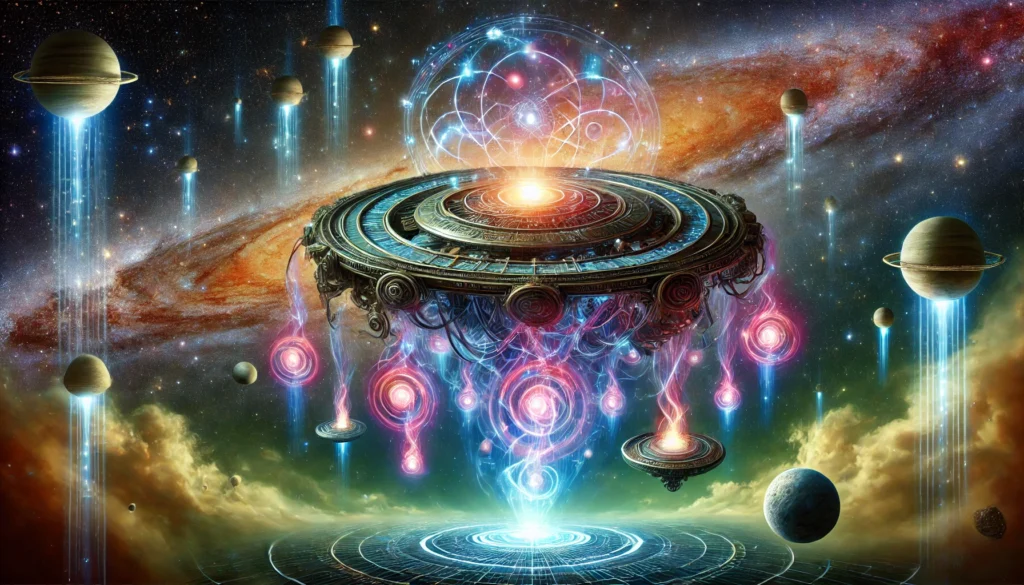Music has always been a universal language, transcending borders, and connecting people across cultures. From the soothing notes of a piano to the rhythmic beat of drums, musical instruments have the power to evoke emotions and tell stories. But beyond the familiar sounds, there exists a world of peculiar, unusual, and downright bizarre instruments. The Finnish term eriskummallisin soitin, which means “the most peculiar instrument,” invites us to explore this fascinating side of music, showcasing the creative minds behind instruments that push the boundaries of sound.
In this article, we will discover some of the world’s strangest musical instruments, their origins, and the unique sounds they produce.
The Glass Harmonica: A Haunting Sound
The glass harmonica is an instrument that produces a delicate, ethereal sound, almost like the whisper of a ghost. Invented by Benjamin Franklin in 1761, it consists of a series of glass bowls or goblets of varying sizes, which are played by rubbing wet fingers along their rims.
Why It’s Peculiar: The glass harmonica’s haunting sound has been both praised and feared throughout history. In the 18th century, people believed the instrument’s ethereal tones could drive listeners to madness! Though it was once popular in European classical music, it eventually fell out of favor, though its haunting tones still captivate music lovers today.
Fun Fact: The glass harmonica was used in famous works by composers like Mozart and Beethoven.
The Theremin: Playing Without Touching
The theremin is one of the earliest electronic instruments and one of the strangest. It was invented by Russian scientist Lev Termen in 1920. Unlike most instruments, the theremin is played without physical contact. The performer moves their hands near two metal antennas, one controlling the pitch and the other the volume, creating eerie, otherworldly sounds.
Why It’s Peculiar: The theremin’s most distinctive feature is that it is played entirely by air. There are no keys, strings, or contact. The musician’s movements in the air create the sounds, which are often used in science fiction and horror films to evoke a sense of mystery or unease.
Famous Use: The theremin is often heard in science fiction movie scores, like The Day the Earth Stood Still, where its eerie sound perfectly matches the otherworldly themes.
The Nyckelharpa: Sweden’s Keyed Fiddle
The nyckelharpa is a traditional Swedish instrument that combines the features of a fiddle and a hurdy-gurdy. It has a series of keys that are pressed by the left hand to change the pitch of the strings, while the right hand plays the strings with a bow.
Why It’s Peculiar: The nyckelharpa is unique because of its use of keys that press against the strings, rather than relying solely on finger placement like a violin. Its sound is both melodic and harmonic, giving it a full, rich tone.
Cultural Significance: With roots dating back to the 14th century, the nyckelharpa is a key instrument in Swedish folk music and has a rich cultural history in Sweden.
The Waterphone: The Sound of Horror
The waterphone is an eerie, metallic instrument that has become synonymous with unsettling, horror movie soundtracks. Invented by Richard Waters in the 1960s, it consists of a metal resonator bowl with rods of varying lengths, and a chamber that holds water. When played, the performer rubs or strikes the rods to produce strange, resonant sounds.
Why It’s Peculiar: The waterphone produces a variety of unsettling, often dissonant tones, making it a go-to instrument for creating tension in films. Its versatility allows it to mimic sounds like creaking doors, distant thunder, or ghostly wails.
Famous Use: The waterphone has been used in iconic horror films like The Shining and Star Trek, where its eerie sounds help set the atmosphere for suspense and fear.
The Shruti Box: A Simple Drone
The shruti box is a simple yet powerful instrument from India, primarily used in Indian classical music and meditation. It consists of a box with a set of reeds that generate a continuous drone sound. The player pumps air into the box, and the sound remains steady, providing a tonal foundation for other musical elements.
Why It’s Peculiar: The shruti box is not a melody instrument but instead creates a drone that allows other instruments or voices to harmonize with it. Despite its simplicity, it plays a crucial role in Indian music, supporting the performer and enhancing the spiritual experience.
Cultural Significance: Often used in meditation and prayer, the shruti box’s steady drone creates a calming atmosphere, allowing musicians to focus on their vocals or instruments.
The Ondes Martenot: Early Electronic Wonder
The ondes Martenot is a unique electronic instrument that was invented in 1928 by French musician Maurice Martenot. It is played with a keyboard and a ring that slides along a wire to control pitch. The instrument creates haunting, otherworldly sounds, similar to the theremin but with a keyboard interface.
Why It’s Peculiar: The ondes Martenot’s combination of electronic technology and keyboard manipulation was groundbreaking at the time. Its ability to glide between notes and produce eerie sounds made it a favorite for avant-garde and classical music.
Famous Use: The ondes Martenot has been used in classical compositions and film soundtracks, most notably in The Forbidden Planet and Dune.
The Stalacpipe Organ: Nature’s Musical Creation
Found in Luray Caverns, Virginia, the stalacpipe organ is one of the most unusual instruments in the world. Instead of pipes, it uses the natural stalactites in the cave to create music. The instrument was built in the 1950s by Luray Caverns’ staff, who attached rubber-tipped mallets to the stalactites.
Why It’s Peculiar: The stalacpipe organ is unique because it uses the cave’s natural formations to produce sound. It’s the largest natural instrument in the world, with 37 mallet-struck stalactites creating a musical scale that resonates throughout the cavern.
Astonishing Fact: The organ is capable of playing full compositions, and its deep, echoing notes create a truly otherworldly sound experience.
The Musical Saw: A Simple Yet Haunting Instrument
The musical saw may look like a regular hand saw, but when played with a bow, it produces haunting, ethereal tones. The player bends the saw with their hands, and when struck with a mallet or bowed, it emits an otherworldly sound.
Why It’s Peculiar: The musical saw is unique because it’s not a traditional musical instrument, yet it can produce both high and low pitches. Its sound is eerie, often compared to a human voice.
Famous Use: The musical saw has been used in folk music, vaudeville acts, and even in modern film scores to create a spooky atmosphere.
The Hang Drum: Modern Musical Innovation
The Hang drum, or simply “Hang,” is a relatively new instrument created in Switzerland in the early 2000s. It’s a steel, dome-shaped percussion instrument that combines elements of the steel drum and handpan. The Hang produces mellow, melodic sounds and is played by striking different areas of the surface.
Why It’s Peculiar: The Hang is unique because, unlike other percussion instruments, it is tuned to specific scales, allowing it to produce a harmonious, melodic sound with each strike.
Popular Use: The Hang is increasingly popular in world music and has found a place in modern meditation practices due to its soothing, tranquil sound.
Last Words on eriskummallisin soitin
These peculiar instruments remind us that music is far more than just familiar melodies and rhythms. The world of music is constantly evolving, with inventors and musicians creating new instruments to push the boundaries of sound. From the eerie tones of the theremin to the soothing hum of the Hang drum, these instruments show that creativity in music is limitless.
As we explore the eriskummallisin soitin—the most peculiar instruments—we discover that sometimes the strangest sounds can create the most beautiful and haunting experiences. The next time you hear a strange instrument, remember that it might be the result of human innovation, offering new ways to experience music in all its forms.
Frequently Asked Questions (FAQs)
What is an eriskummallisin soitin?
Eriskummallisin soitin is Finnish for “the most peculiar instrument,” referring to unique and unconventional musical instruments that produce unusual or eerie sounds, often pushing the boundaries of traditional music.
How does a theremin work without being touched?
The theremin is played by moving your hands near two antennas—one controls pitch and the other controls volume—allowing the performer to create eerie sounds without physical contact.
What makes the glass harmonica sound so haunting?
The glass harmonica produces its eerie, ethereal tones by rubbing wet fingers along the rims of glass bowls, creating a haunting, ghostly melody that has fascinated musicians for centuries.
Can the stalacpipe organ really play music?
Yes! The stalacpipe organ uses the natural stalactites in Luray Caverns to create music. Striking the stalactites with rubber-tipped mallets produces notes, creating a large-scale, natural musical instrument.
Why is the musical saw used in horror films?
The musical saw’s eerie, wailing sound, created by bending a hand saw and playing it with a bow, makes it a perfect choice for creating tension and a spooky atmosphere in horror movies.
Article Recommendations:
Akoun 昆醬 – The Rising Star of Chinese Music
Yokeru Kamo: the Contemporary Look about Beautiful Girl Animation.
KQED This Week David Spark: Exploring Bay Area Stories and Insights









